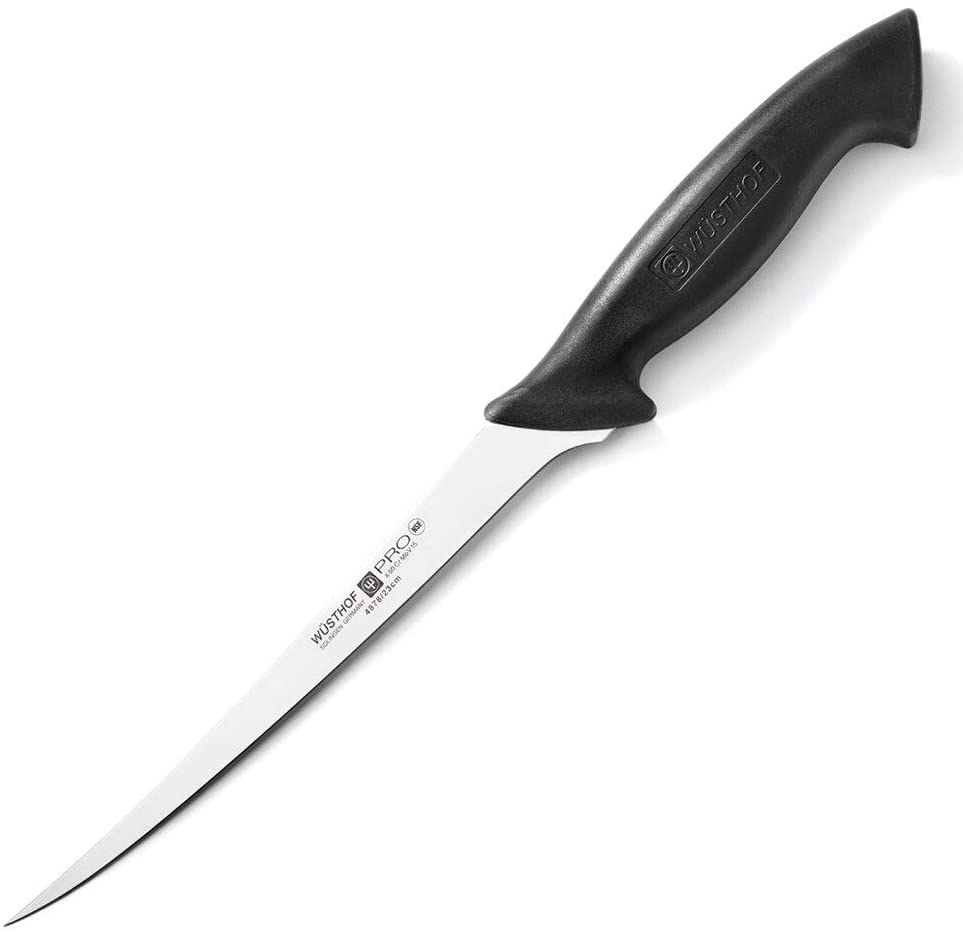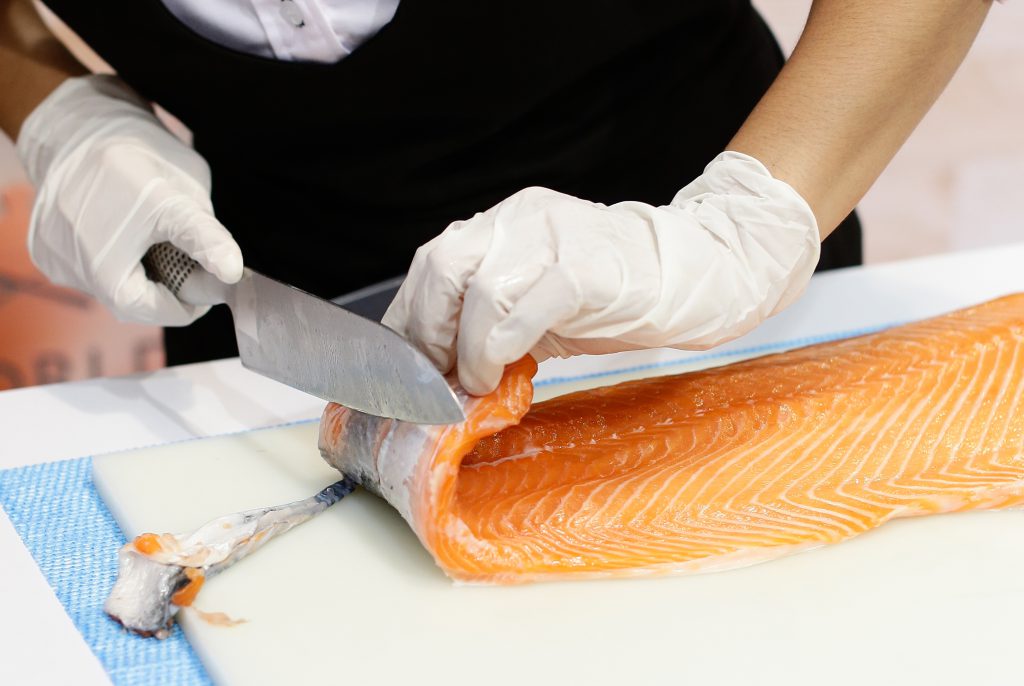If you’re a passionate cook or professional chef, you know that having the appropriate kitchen tools is essential to culinary perfection.
Filleting knives are required. What does a filleting knife do? This article will cover filleting knives, their uses, and the technique of filleting. Let’s learn and taste!
What is a Filleting Knife Used For?
A kitchen filleting knife is used to fillet and debone fish and meat. Its small, flexible blade and sharp cutting edge make it crucial for precise, flawless incisions. A filleting knife separates flesh from bone to ensure skilled fillet preparation.
The Anatomy of a Filleting Knife

Let’s look at a filleting knife’s parts to see how it works:
Blade: A filleting knife’s blade is narrow and 6–11 inches long. This lengthy form makes filleting easy and precise. Stainless or high-carbon steel blades are durable and sharp.
Handle: Filleting knives include ergonomic handles for comfort and grip. Wood, plastic, or composite materials give it solidity and reduce slippage.
Flexibility: Filleting knives must be flexible. The blade’s flexibility helps it manoeuvre around bones and curves to extract flesh from the bone with minimal waste.
Techniques for Using a Filleting Knife

Proper technique and ability are needed to cut cleanly with a filleting knife. Filleting knife techniques:
Grip: Hold the filleting knife firmly but relaxed. For increased control and stability, place your index finger along the knife spine.
Safety: Secure your cutting surface to avoid mishaps. Avoid injury by cutting away from yourself.
Preparation: Clean and descale the fish. For simpler handling, refrigerate or freeze the fish.
Initial Incision: Start with a slight incision behind the gill plate or pectoral fin. Insert the knife tip into the incision and glide it along the backbone, angling it towards the head.
Follow the Contour: Keep the blade against the bones and follow the fish’s outlines when filleting. Separate flesh from bones with smooth, steady strokes.
Keep a Steady Angle: Keep the blade at the fish’s bones. Most fish prefer 20–30 degrees.
Use the Knife’s Flexibility: Filleting knives can readily manoeuvre around bones and joints. Control the fish using the knife’s flexibility.
Remove Rib Bones: Rib bones may appear as you continue. Carefully cut along the rib bones to remove them without losing meat.
Tail End: Carefully cut through the flesh and follow the tail’s form to separate it from the fillet.
Remove Skin: Hold the fillet firmly and slide the knife between the flesh and skin at a shallow angle to remove the skin. To separate the skin from the fillet, gently press and pull.
Remove Pin Bones: Remove pin bones after filleting. Remove them with tweezers or fish bone pliers for a boneless fillet.
Tips for Using a Filleting Knife

Consider these filleting knife maintenance tips:
Keep it sharp: Clean slices require a sharp filleting knife. Keep the blade sharp with an honing steel or sharpening stone.
Clean and dry: Wash and dry the filleting knife after each usage. This avoids rust and preserves the blade.
Use a cutting board: Use a solid wood, plastic, or bamboo cutting board to protect the blade and avoid mishaps. Glass and ceramic can blunt the blade.
Secure it: Protect your filleting knife with a sheath or blade guard. The blade stays sharp and prevents cuts.
Practice proper knife skills: Learn and practise proper knife skills for safety and optimum outcomes. This includes proper knife handling, control, and cutting actions.
Filleting Knives FAQs
Is a filleting knife versatile?
Besides filleting and deboning, a filleting knife can be used to slice or trim small fruits and vegetables. To keep the knife sharp and long-lasting, use it as intended.
Sharpen my filleting knife how often?
Sharpening depends on blade condition and use. After 3-4 uses or when cutting performance decreases, sharpen a filleting knife. Honing with an honing steel between sharpenings helps retain sharpness.
Different filleting knives?
Yes, filleting knives have different characteristics and benefits. Stiff, flexible, and narrow-bladed boning knives are popular. Preference and task dictate the choice.
Filleting poultry?
Filleting knives can also be used for birds. However, take care to sharpen the knife and stabilise the cutting surface. Poultry bones are harder and require greater accuracy.
What keeps a filleting knife flexible?
Getting around bones and curves requires a flexible filleting knife. Avoid severe temperatures and strain to maintain knife flexibility. Avoid prying or twisting objects and store it in a cold, dry location.
Conclusion
Any chef seeking excellence needs a filleting knife. Its sharpness, flexibility, and particular shape make it excellent for filleting and deboning fish, pork, and other delicate foods.
Mastering basic procedures and safety precautions can improve your cooking skills and create attractive food. For best performance and longevity, keep your filleting knife sharp, clean, and well-maintained.
When you wonder, “What is a filleting knife used for?” remember its variety, precision, and potential to improve your culinary masterpieces. Filleting knives open up culinary choices.
